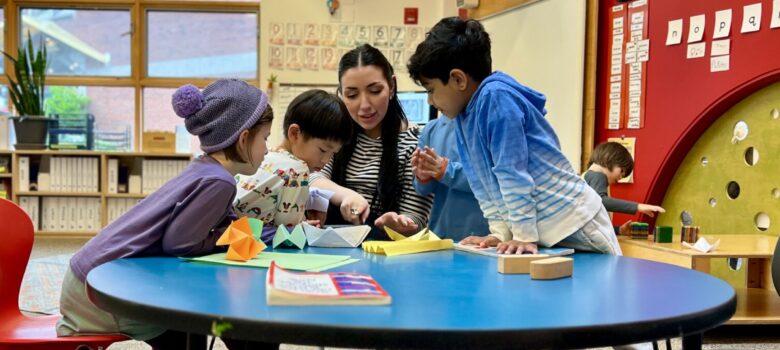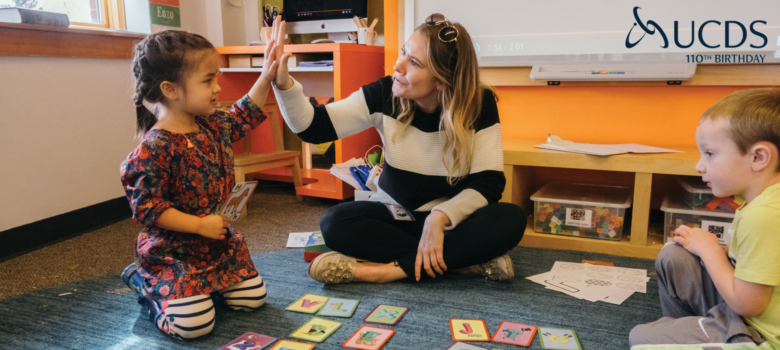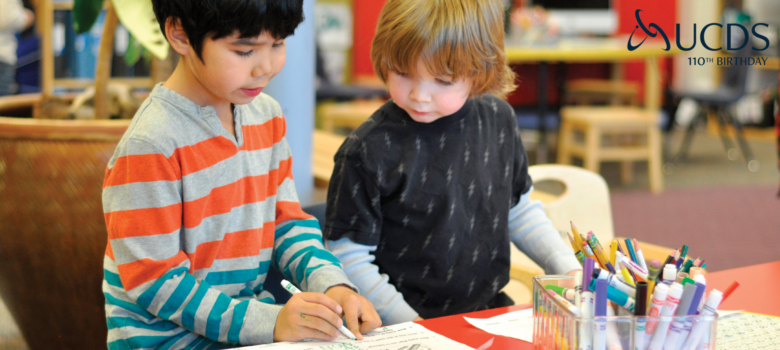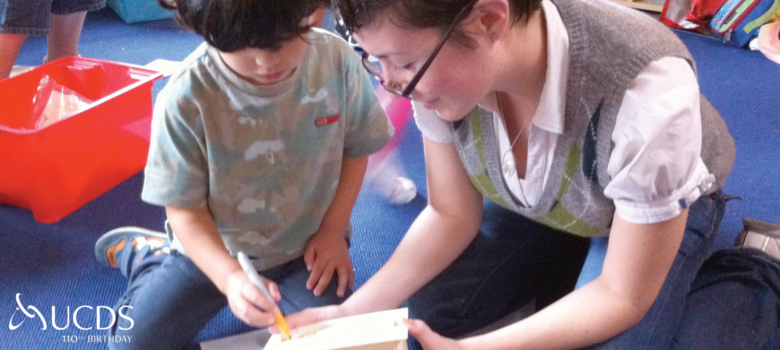Maggie Ruisi is back to discuss how her teaching team developed a new program called Community Connections, which honors the work of the late Martin Luther King Jr. -Ed.
————
Last fall, the 1-2 team of teachers (teachers of first and second grader mixed classroom) met to map the social studies curriculum for the coming year. The question of how we would honor Martin Luther King Jr.’s legacy for MLK day turned a typical planning meeting into a year-long discussion about philosophy and how we would intentionally incorporate diversity of opinion, ethnicity, and experience into the fabric of our daily life at UCDS.
We decided to build off a long-standing program; that of our second graders visiting Nikkei Manor, an assisted living facility catering to Asian elders in Seattle’s International District. For many years, the second grade students have visited Nikkei Manor on a monthly basis. They have learned about the culture and heritage of these wise community members while growing memorable friendships that added value to all who participated. We wanted to introduce this experience to the first grade students in preparation for their roles as second graders in the year to come. However, it was important that we create the opportunity for a unique and valuable experience of their own.
And so, Community Connections was born. Community Connections became a monthly exploration of our community at the micro-local level: our own University District neighborhood. We began our exploration with a simple walk through the neighborhood to explore how organizations and people were already helping our community and to brainstorm ways that we could add to this rich and diverse neighborhood. After discovering that on our own block we had a fire department, a cat shelter, and a food bank, our students decided to reach out to the food bank and see how we might contribute. Since our group began this program in November, we settled on knitting hats for those in need who visited the food bank. As our little first graders settled in to the long, and sometimes frustrating, process of knitting, they also journaled about their thoughts and questions.
We, their teachers, were then able to use these journal entries as the basis for our community discussions. Using these conversations, we clarified stereotypes (everyone who uses the food bank is not necessarily homeless) while nurturing a sense of community-mindedness in our six year olds. At the same time, we were able to provide an opportunity for our students to actively take part in making a difference within their neighborhood.
Community Connections was one of several ways in which we honored the work of Martin Luther King Jr. and become active members within our own neighborhood and city. Each component, taken on its own, is a worthwhile endeavor for our students. Taken together, they are a strong step in adding authentic richness and understanding of diversity within our community at the local level. Is there room to grow? Of course. However, I believe I speak for my entire team when I say that I am proud of the social-justice and diversity that we have infused into our program. I look forward to continuing to stumble and learn as we grow this program in the years to come.




